Physical Address
304 North Cardinal St.
Dorchester Center, MA 02124
Physical Address
304 North Cardinal St.
Dorchester Center, MA 02124
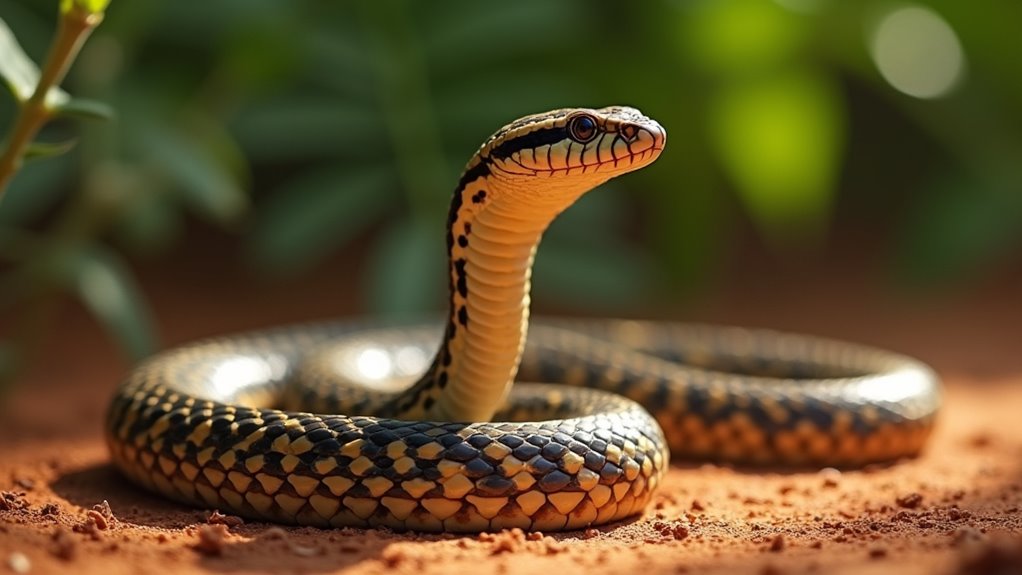
Otherworldly vipers and deadly kraits lurk throughout Sri Lanka's landscapes, but can you recognize them before it's too late?
Sri Lanka’s most venomous snakes include the Indian Cobra (recognizable by its hood), Russell’s Viper (known as “merchant of death”), Common Krait (deadly nighttime invader), Sri Lankan Krait (endemic forest dweller), Saw-Scaled Viper (small but aggressive), and the Hump-Nosed Pitviper (common in plantations). You’ll encounter these dangerous reptiles in various habitats from gardens to farmlands. When exploring the island, knowing these species’ distinctive features and behaviors could save your life.
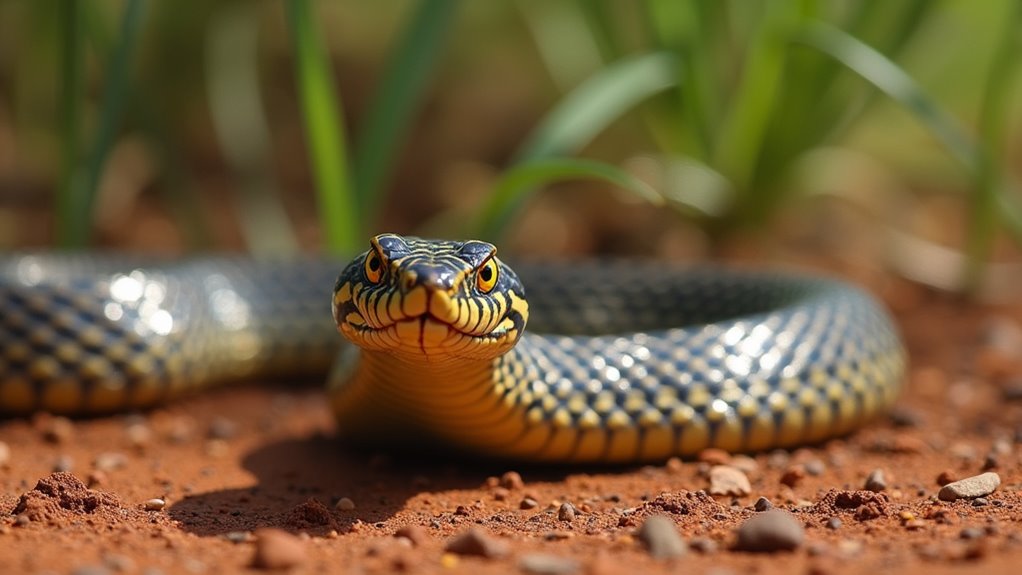
While Sri Lanka is home to nearly 100 snake species, only a handful pose a serious threat to humans. The Common Krait tops the list with neurotoxic venom that’s four times more potent than a cobra’s, often delivering bites that go unnoticed until symptoms develop.
Though Sri Lanka houses nearly 100 snake species, few threaten humans—with the Common Krait’s potent, often undetected bite leading the danger list.
The endemic Sri Lankan Krait is equally dangerous, while Russell’s Viper delivers a haemotoxic bite causing severe bleeding and organ damage. The fifth deadly species, the Hump-nosed Pitviper, is responsible for the highest number of snake bites in the country annually despite its small size. Indian Cobras cause paralysis and respiratory failure, and the Saw-scaled Viper’s venom destroys blood cells and tissues.
These “Big Four” snakes—Russell’s Viper, Common Krait, Indian Cobra, and Saw-scaled Viper—are responsible for most of Sri Lanka’s approximately 1,200 annual snakebite deaths.
If you’re bitten, seek medical care immediately.
Among Sri Lanka’s most dangerous snakes, the Indian Cobra (Naja naja) emerges as a formidable garden predator. You’ll recognize this venomous serpent by its distinctive spectacled hood pattern and lengths reaching up to 1.5 meters. Its adaptability to both wild and human environments makes your garden an attractive habitat. The snake can efficiently help control pest populations as it primarily feeds on rodents and frogs.
When encountering this snake, remember:
The Indian Cobra’s cultural significance to Lord Shiva doesn’t diminish its danger. These silent hunters thrive throughout Sri Lanka’s diverse landscapes, from forests to your backyard.
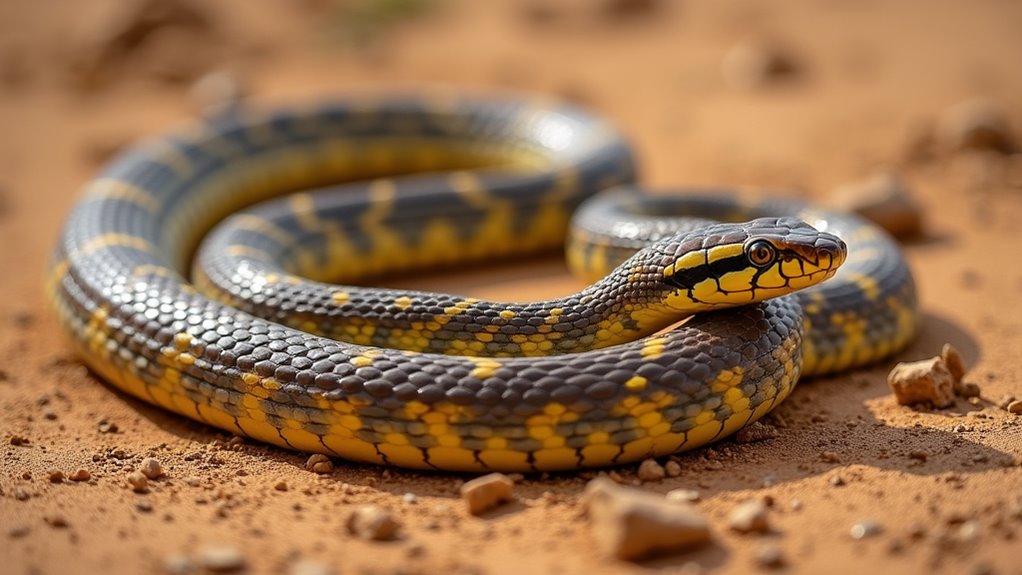
Known as the “merchant of death” in Sri Lanka’s farmlands, the Russell’s Viper (Daboia russelli) ranks as one of the nation’s most lethal snakes. You’ll recognize this viper by its distinct pattern of dark spots outlined in white or yellow against a light brown background.
Feared as death’s merchant in Sri Lankan fields, the Russell’s Viper delivers lethal strikes with distinctive spotted elegance.
If you’re working in agricultural fields, be extra vigilant as these vipers commonly lurk there, hunting rodents near human settlements. They’re active primarily at night but can appear during dusk in cooler weather. The snake often displays a pinkish V marking on its snout, which is another key identifying feature.
A bite delivers potent hemotoxic venom that causes bleeding, tissue damage, and coagulation disorders. Don’t delay if bitten—seek immediate medical attention for antivenom treatment.
Despite their deadly reputation, these snakes play a vital ecological role by controlling rodent populations. They’re usually non-confrontational but will strike if threatened.
The slender, glossy black Common Krait slithers through Sri Lanka’s darkness as one of the island’s deadliest serpents. Reaching 1.5 meters with distinctive white crossbands, this snake is widely distributed across the country, especially in dry zones.
You’ll face unique dangers from this nocturnal predator:
Their venom primarily contains phospholipases A2 that contribute to their lethal neurotoxic effects. Don’t sleep on the floor during peak season (September-November). If bitten, immediate hospitalization is critical as antivenom and respiratory support dramatically improve your chances of survival.
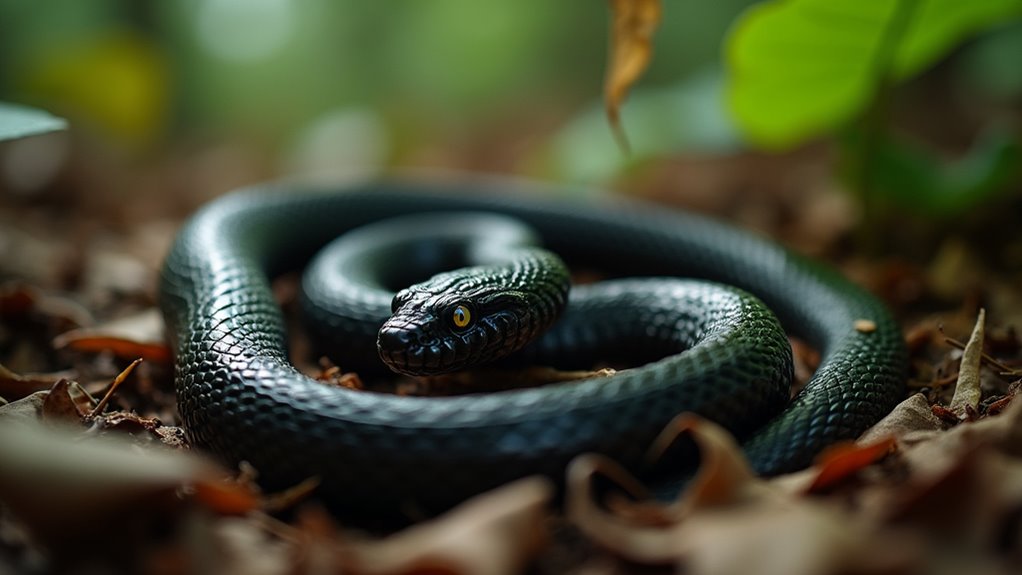
Unlike its common cousin, Sri Lanka’s endemic krait (Bungarus ceylonicus) lurks exclusively within the island’s wet forests and occasionally ventures into the dry zone. You’ll find these snakes in dense forests with thick leaf litter, though they’ve adapted to gardens and plantations as well.
This near-threatened species delivers a potent neurotoxic venom that can cause paralysis and respiratory failure. Its bite may feel like a mere insect sting due to its small fangs. While not as deadly as the Common Krait, it’s still highly dangerous.
The Sri Lankan Krait faces significant threats from habitat destruction and fragmentation. Its populations are becoming increasingly isolated as deforestation continues. When threatened, this slender snake inflates its extremely long lung as a warning display.
If you’re exploring Sri Lanka’s forests at night, remain vigilant—these nocturnal hunters become defensive when cornered.
Small but exceptionally dangerous, the saw-scaled viper (Echis carinatus) inhabits Sri Lanka’s dry coastal plains and sandy regions.
Despite accounting for only 1-2% of reported snakebites annually, this aggressive serpent’s hemotoxic venom can cause severe consequences including renal failure if not treated promptly. When disturbed, these vipers often bury themselves in loose sand, leaving only their heads exposed.
Though relatively rare, saw-scaled viper bites can lead to catastrophic renal failure without swift medical intervention.
You’ll recognize this viper by:
If you’re exploring Sri Lanka’s hot, arid environments, stay vigilant.
This small snake’s potent venom requires immediate medical attention, and thankfully, specific antivenom is available at healthcare facilities throughout the region.
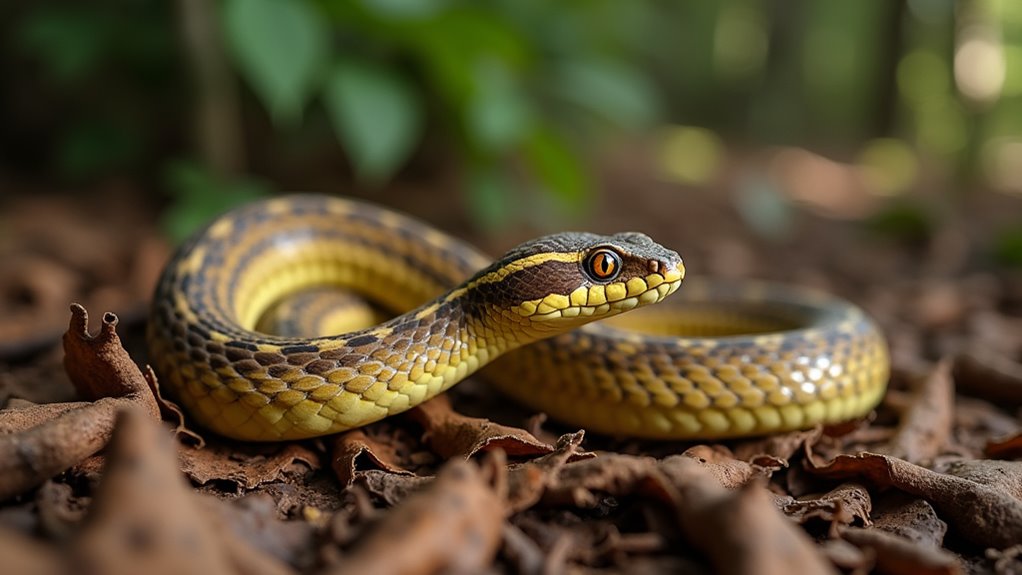
Long overlooked for its medical significance, the hump-nosed pitviper (Hypnale hypnale) now ranks as Sri Lanka’s most common venomous snake bite culprit. You’ll find this species in dense jungles, coffee plantations, and the Western Ghats of India.
Don’t be fooled by its slow movements—this snake strikes quickly when threatened. It’s primarily active at dawn and night, often basking streamside at sunrise. When disturbed, it vibrates its tail like a rattlesnake.
Bites can cause serious complications including coagulopathy, kidney failure, and microangiopathic hemolytic anemia. Despite its relatively small size of 30 to 45 cm, this snake can deliver potent venom that shouldn’t be underestimated. Without treatment, they can be fatal within hours.
Unfortunately, no specific antivenom is widely available, though one is in development. If bitten, seek immediate medical attention for supportive care and monitoring.
Sri Lanka’s venomous snakes demand your respect, not your fear. When hiking forests, walking sandy shores, or tending gardens, stay alert and step carefully. Learn to identify these species, carry a first aid kit, and know the nearest medical facilities. Remember: they strike when threatened, not out of malice. By understanding their habitats, recognizing their markings, and respecting their space, you’ll safely enjoy Sri Lanka’s natural beauty.